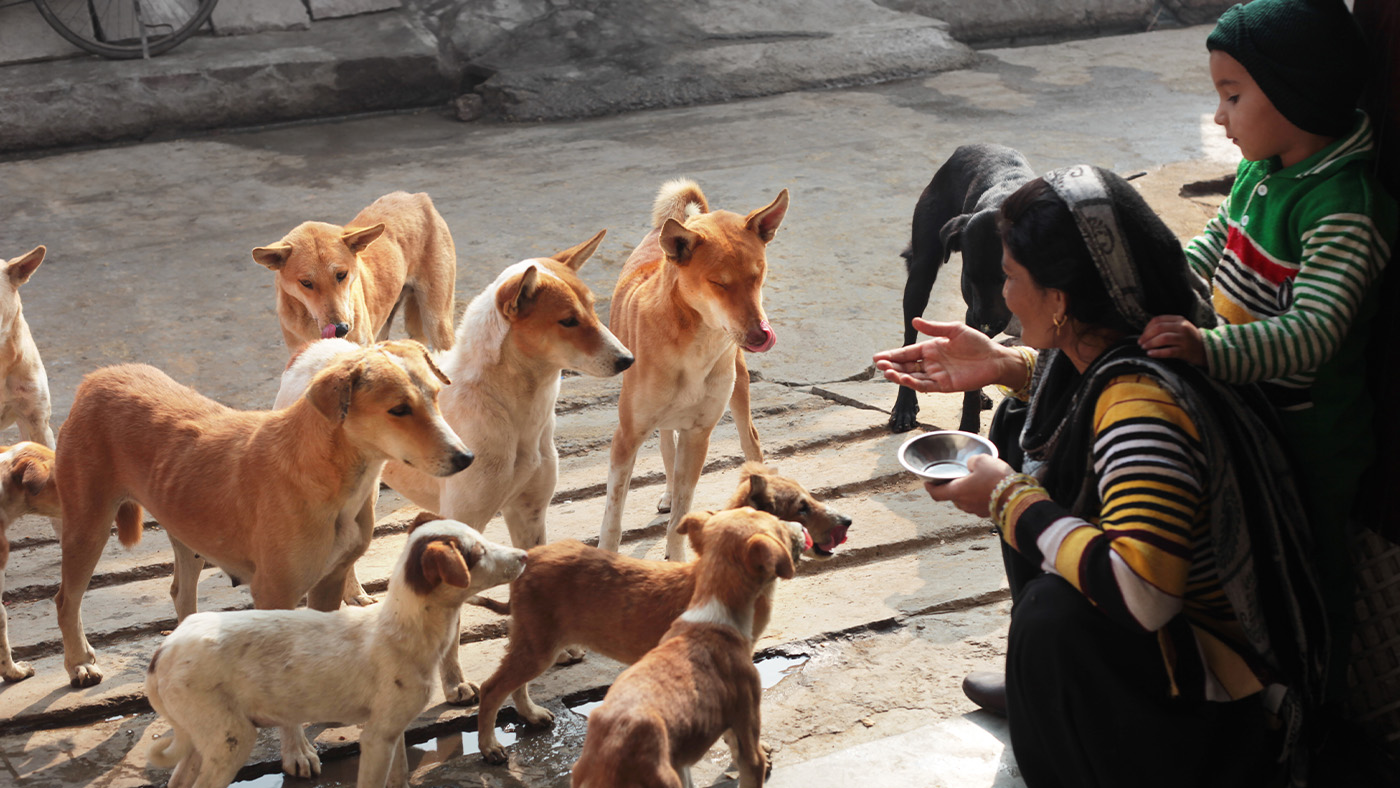Street dogs: What they are, where they live, and how to help them
They’re often in the news, so here’s everything to know about street dogs

We always do our best to give our dogs the best lives we can, but not all animals are as fortunate as they are – street dogs, for example.
Indeed, it’s thought that there are millions of street dogs around the world. Many of them have only known the street, being born to other street dogs, while others were abandoned or ran away from their homes.
They’re often in the news, whether it’s because of generous volunteers helping them and ensuring they have some of the best dog food, or local authorities enacting controversial measures to deal with street dog populations, but what actually is a street dog, and how can we help them?
We’ve spoken to our vet, Dr Rebecca MacMillan, to find out more about the issues street dogs face, too. So, here’s everything you need to know about these metropolitan canines, beginning with the definition.
What is a street dog?
A street dog is a free-ranging dog who lives in a city. The term is often used synonymously with stray dog and feral dog, but street dogs refer solely to those who live in urban areas.
Many street dogs are former pets who’ve escaped or been abandoned, while others are feral and have never been owned. They may have been born on the street to other street dogs, and spent their entire life without a home.
They can be purebred dogs (here’s how to identify any breed), mixed-breed, or landrace breeds – those that develop over time to adapt to their environment.
Get the best advice, tips and top tech for your beloved Pets

Where are street dogs found?
Street dogs are most common in developing and newly industrialized countries, with India alone having over 60 million free-ranging dogs – a huge proportion of these will be street dogs. There are street dogs across most of the world, but most are found in regions of South Asia, Latin America, and Eastern Europe.
Street dogs aren’t as common in regions like Western Europe, the US or Canada, but they’re still present. Essentially, there will almost definitely be street dogs in any city that’s populated by humans.

What issues do street dogs face?
Illness and injury
Street dogs face a lot of issues, some of which they have in common with pet dogs. Take their health, for example.
“Stray dogs can suffer from many of the same conditions as pet dogs,” says Dr. MacMillan. “But they face some extra challenges, too.
“Malnutrition can be a big problem for street dogs. These dogs rely on their scavenging instincts to find food, eating whatever scraps they can find. This doesn’t make for the most balanced diet, particularly if they are raiding trash cans for leftovers like pizza crusts and other half-eaten fast-food items.”
Many young street dogs struggle to grow properly, and they often become underweight. Others risk eating rancid or moldy food, ingesting bones – this can cause bowel obstructions – or eating food that’s toxic for dogs.
Skin conditions are another common issue, often because of parasites like fleas and mange mites, but also due to the dogs’ poor diets. Among the issues dogs can face include hair loss, itchiness, and secondary skin infections.
“As these dogs are not vaccinated, they are also at risk from infectious diseases, such as parvovirus, distemper, leptospirosis, and rabies. Some of these diseases are zoonotic, meaning they can be spread to humans,” adds Dr. MacMillan.
Aside from health conditions, street dogs are at increased risk of accidents too. From road accidents to abuse from humans to fights with other stray dogs, there are plenty of risks. And, if a street dog is injured, they’re less likely to be treated and so could develop serious infections.

Behavioral problems
Aside from a few dogs who may have had a loving home before escaping, street dogs won’t have been socialized in the same way as our own pets. This can make them wary of humans and unfamiliar situations, so street dogs can be aggressive.
“People considering adopting a rescued stray or street dog should bear this in mind,” advises Dr. MacMillan. “These dogs are likely to require patient handling and intensive training and are not generally suitable for novice pet owners.”
Treatment from local and national authorities
As well as the potential for abuse from locals, some jurisdictions have proposed or implemented policies that harm street dogs.
In March 2025, Türkiye’s interior minister promised to apply a law to remove millions of street dogs despite animal welfare groups describing it as the “massacre law”. The legislation was passed by parliament last summer but has only been partially implemented by local authorities so far.
While only dogs who are in pain, terminally ill, or a health risk to humans should be euthanized as per the law, many animal welfare advocates are concerned that authorities may also euthanize healthy dogs to save money.
Also in 2025, animal welfare advocates raised concerns about measures to deal with street dogs in Morocco ahead of the country co-hosting the World Cup in 2026, too. Les Ward, chairman of the International Animal Coalition (IAWPC), claimed that dogs in the North African country were being "shot, poisoned, caught and killed”.

How can we help street dogs?
While it won’t be right for everyone, adoption is one way to help street dogs. But as Dr MacMillan says, this choice is better suited to more experienced pet parents.
Alternatively, there are many charities and organizations doing vital work helping protect street dogs around the world. Often, the best strategy is to catch street dogs, neuter or spay them, vaccinate them, and then release them.
In an ideal world, every street dog would be adopted and given a happy home, but there are simply too many. By neutering or spaying and then vaccinating them, these charities help keep them safe while they live on the street, while preventing them from reproducing and creating more free-ranging animals.
Some countries and jurisdictions carry out this practice too. In 2023, it was reported that Bhutan, sandwiched between China and India in the Himalayas, had managed to sterilize all stray and street dogs in the country.
The charity Four Paws International has helped dogs in Eastern Europe and Southeast Asia ever since 1999, when they first started work in Romania. Then, from Lucas Helps Dogs in Sri Lanka to the Clean Futures Fund’s Dogs of Chernobyl program in Ukraine, there are so many charities and nonprofits doing their part to help.
You could always look for charities in your area that work with street dogs, be it locally or overseas, and find out whether they take donations or are open to volunteers.
If you are thinking about adopting a dog, whether a street dog from another country or a pup in a shelter closer to home, here are eight things you need to know before getting a rescue dog

Adam is a freelance journalist specialising in pets, music and culture, and mental health and wellbeing. He investigates and writes the large majority of news on PetsRadar, and collaborates with veterinary experts to produce informative pet care content.
Adam has a journalism degree from Southampton Solent University and a masters degree in Magazine Journalism from Cardiff University. He was previously senior editor at dog advice website DogTime.com, and has also written for The Independent, GoodToKnow and Healthline.
He owns two rescue cats, Bunny and Dougie, and has also previously had a rabbit, fish and Roborovski dwarf hamsters.
